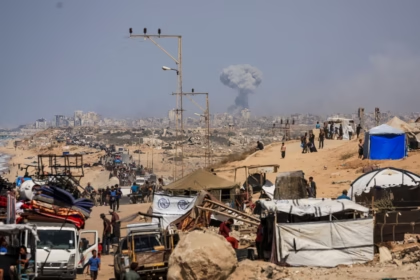Tehran, Iran – Iranian Foreign Minister Abbas Araqchi announced the possibility of holding another meeting with European Union foreign policy chief Kaya Kallas.
Serious negotiations in Cairo
Araqchi said another meeting with the European Union’s foreign policy chief was likely.
He explained that this matter depends on Europe’s decision, according to IRNA.
He also pointed out that the Cairo negotiations are very serious. The negotiations taking place after the war are not easy, considering that there is no place for laughter in them.
This comes as an agreement was recently concluded in Cairo between Iranian Foreign Minister Abbas Araghchi and IAEA Director General Rafael Grossi.
This happened under the patronage of Egyptian Foreign Minister Badr Abdel Aty. It was regarding how to deal between Iran and the agency following the 12-day war with Israel.
Araqchi confirmed last Wednesday that the entry of International Atomic Energy Agency inspectors into his country’s nuclear facilities will be restricted. This is despite the agreement concluded in Egypt.
He also stressed that Tehran would not allow IAEA inspectors to enter any site except the Bushehr nuclear power plant. This plant is located in the south of the country.
Snapback mechanism
It is noteworthy that on August 28, the European Troika launched a 30-day process to re-impose sanctions on Iran under the “Snapback Mechanism”. This would occur if Tehran did not resume its full cooperation with the agency, including inspections.
Last week, the IAEA expressed its regret over Iran’s decision to suspend cooperation with it following the war with Israel.
She pointed out that Tehran accelerated the pace of production of highly enriched uranium before the start of the Israeli attack.
She noted that its stock of 60 percent enriched uranium reached 440.9 kg on June 13. This represented an increase of 32.2 kg over May 17.
According to the agency, Iran is the only non-nuclear country in the world that enriches 60 percent uranium. This level is close to the 90% required for military use.
This level exceeds the ceiling set at 3.67 percent in the international agreement concluded in 2015 with the major powers.
The United States withdrew from it unilaterally in 2018, during President Donald Trump’s first term.

















